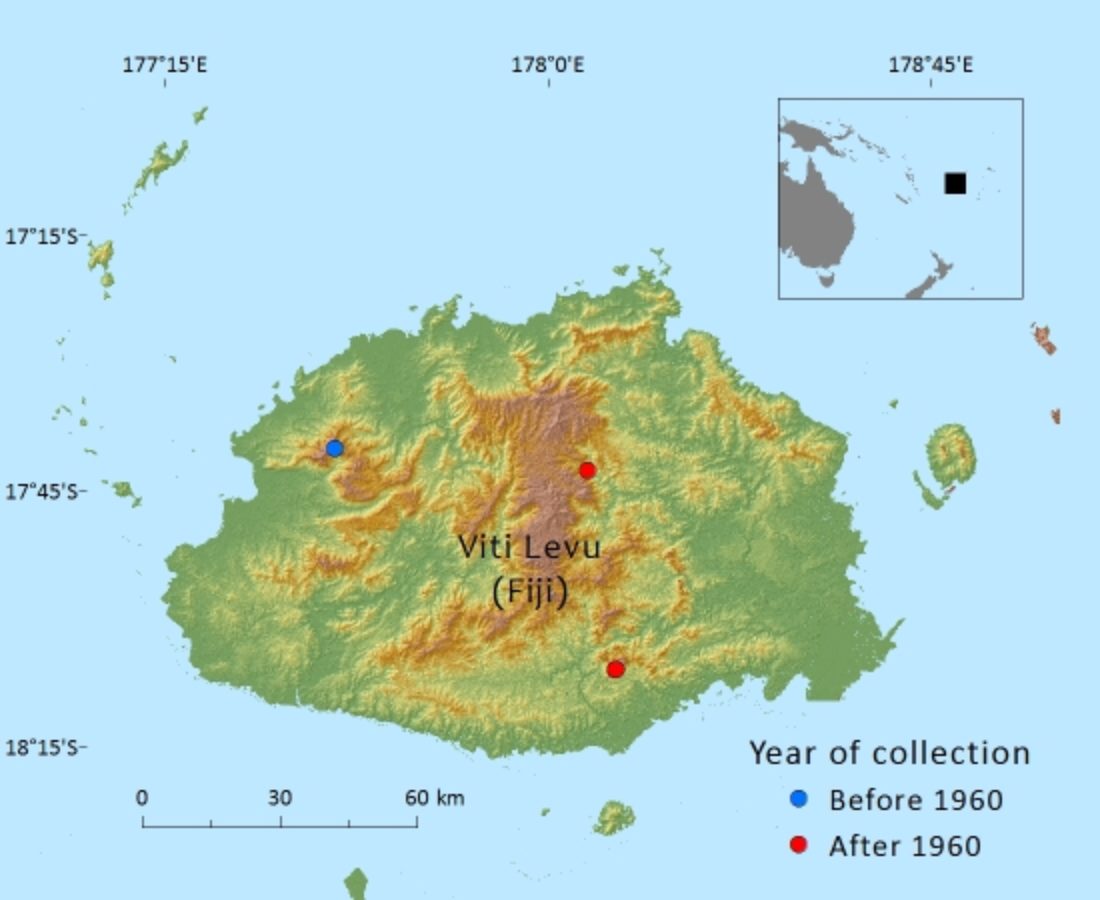Podocarpaceae
Acmopyle sahniana
Endemic to Viti Levu, the largest island in the Republic of Fiji, where it is known from 5 localities with an estimated total population of about 200 individuals
References and further reading
- Bush, E.W. and M.F. Doyle. (1997). Taxonomic description of Acmopyle sahniana (Podocarpaceae): additions, revisions, discussion. Harvard Papers in Botany 2(2): 229–233.
- Department of the Environment, Fiji. (1999). Fiji. Biodiversity strategy and action plan (final draft). Department of the Environment, Suva.
- Doyle, M. (1998). Gymnosperms of the southwest Pacific 1. Fiji. Endemic and Indigeneous Species. Changes in Nomenclature, key, annotated checklist and discussion. Harvard Papers in Botany 3(1): 101–107.
- Keppel, G., A. Naikatini, I. Rounds, R. Pressey, N. Thomas (2015). Local and expert knowledge improve conservation assessment of rare and iconic Fijian tree species. Pacific Conservation Biology 21(3): 214-219.
- NatureFiji. (2011). Acmopyle sahniana: Drautabua. Suva Available at: http://www.naturefiji.org/endspecies.php?info=Acmopyle%20sahniana. (Accessed: 3 March 2011).
- Oldfield, S., Lusty, C. & MacKinven, A. (compilers). (1998). The World List of Threatened Trees. World Conservation Press, Cambridge, UK.
- Olson, D., Farley, L., Patrick, A., Watling, D., Tuiwawa, M., Masibalavu, V., Lenoa, L., Bogiva, A., Qauqau, I., Atherton, J., Caginitoba, A., Tokota’a, M., Prasad, P., NaisilisilI, W., Raikabula, A., Mailautoka, K., Morley, C. & Allnutt, T. (2009). Priority Forests for Conservation in Fiji: landscapes, hotspots and ecological processes. Oryx 44(1): 57–70.
- Smith, A.C. (1948). An Ascent of Koroyanitu. Proceedings of the National Academy of Sciences of the United States of America 34(12): 579–585.
- Smith, A.C. (1979). Flora Vitiensis Nova: a new Flora of Fiji. Pacific Tropical Botanic Garden, Hawaii.
- Watt, A. (1996). Completed data collection forms for conifers of New Caledonia and Fiji.





